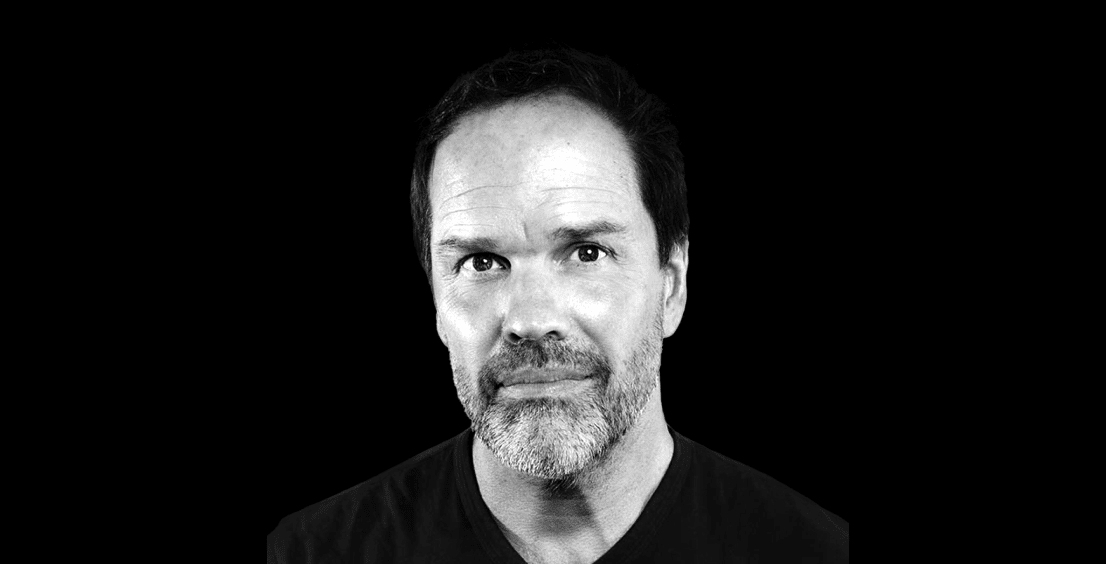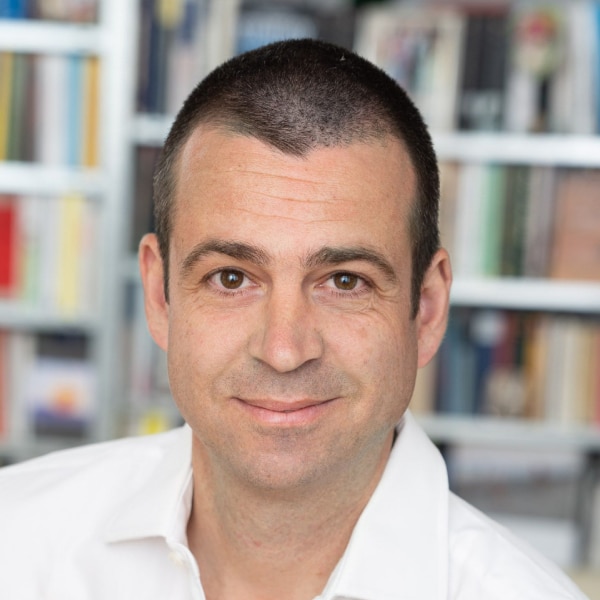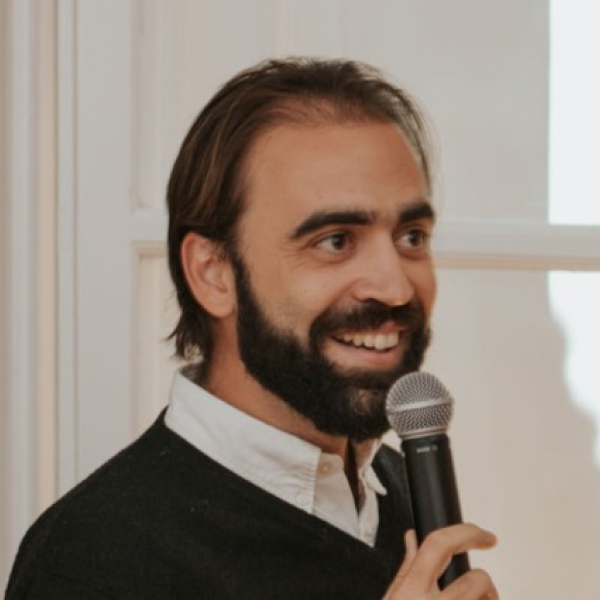Cognitive Marketing: Build More Successful Campaigns Using Science
Sandeep Dayal
Author of "Branding Between the Ears"

Marketing is a science. And now, thanks to advances in cognitive science, marketers can harness the power of human psychology to influence consumer behavior.
What is cognitive marketing? What are its benefits? How does it differ from other types of marketing?
Learn all this and more during an interview with Sandeep Dayal, seasoned marketing and strategy leader. He shares how cognitive science can be applied to branding and marketing. Plus, how we can use cognitive marketing to develop strategies that are more likely to succeed.
Highlights From This Episode:
- The meaning of cognitive science
- How behavioral science can be applied to branding
- Gathering cognitive data
- Challenges cognitive science can help marketers overcome
- The role of cognitive science in digital marketing and lead generation
Watch the Live Recording
Cheryl Boehm: Hello and thanks for listening to the Lead(er) Generation Podcast. Today, we’re talking about the science of marketing, more specifically how marketers can really harness the power of human psychology to build better connections with consumers and even influence their behavior.
Cheryl Boehm: Today’s guest is Sandeep Dayal, a seasoned marketing and strategy leader with a long list of accomplishments that you can read all about in his bio that we’ve linked to. Plus he’s the author of “Branding Between The Ears, Using Cognitive Science to Build Lasting Consumer Connections.” Welcome to the show.
Sandeep Dayal: Thank you, I’m so happy and delighted to be here.
Cheryl Boehm: Great, so cognitive science is a newer way of thinking about branding and marketing and we have a lot to cover today. So we’re just gonna dive right into the questions. So my first question for you is: what is cognitive science and how would you describe that in simple, easy to understand terms?
Sandeep Dayal: And look, cognitive science is kind of a term that I’ve used and I use also brain sciences, but it’s a term that sort of accomplished that encapsulate a lot of different sciences so like behavioral science which we all know about. Also cognitive psychology, social anthropology, linguistics and so on. The common theme across all of these things, Cheryl, is that these sciences have been deeply looking at how the human mind works. And that is so important for us as marketers, as brand marketers and so on, because we wanna understand how consumers make choices when they’re picking from our brands. So basically what I’ve done is I’ve taken all those sciences and called them cognitive science, but the whole idea is to really understand better how the mind works.
Cheryl Boehm: Great, thank you for of that explanation. So how can all these different sciences and cognitive science be applied to branding? Like what role does it play?
Sandeep Dayal: So, as I said, the main thing when you’re acting as a brand marketer, the main thing you’re trying to do is to influence if you will consume a choice. That is the main purpose of it. We want you to prefer our brand. So really understanding cognitive science which is helping you understand how the brain works and how it makes choices both consciously and subconsciously right away. When you get a much better x-ray and understanding of those things, then you can start taking that research and that findings that have come out from there and start applying it to branding. So we’re learning just a tremendous amount, for example, about how things like empathy work, things like connections with the consumer, things like purpose and so on. All of these things, which have been so vague in the past have become much more precise and are right under a shining light now.
Cheryl Boehm: That’s really exciting and I know there are just so many different branding processes out there and frameworks that a lot of marketers and branding agencies are already using. So why should a marketer use this cognitive science instead?
Sandeep Dayal: And that’s a great question. And the simple answer is that a lot of the frameworks that have been used in the past did not benefit from all of this knowledge around how the brain works. So they were kind of guesses. They were approximations and that’s why we’ve had results like hey, you spend all this money and you only know how half of it is working and you don’t know which half is working and so on. We’ve had that issue for now for 40, 50 years. And this is now when we are learning all these things, we can get much more precise about how exactly this is all supposed to work.
Sandeep Dayal: Now, the frameworks, let me also say about those frameworks. The nice thing about the old frameworks is they kind of make intuitive sense. So basically branding has all been about product differentiation. So we would say hey, here’s my product. How’s it different from everybody else’s product? And I’m gonna take those differences, make a list of them and then put that in my branding somehow, it’ll be a tag headline, it’ll be a color. Something will be there, that’s what’s on product differentiation.
Sandeep Dayal: And what we are finding out now is that the human brain for one doesn’t react very well to lists. If you give people a list of benefits, they’ll miss half of those things. It’s just like if you send me shopping and you say, hey go buy all these five different things, these groceries for me, I’m gonna forget three of them because the human brain is just not great with lists.
Sandeep Dayal: So really what you’re finding is that you have to figure out this whole thing in a different way whereas to understand how does the brain, for example, have subconscious rules around how it makes choices. How does it consciously analyze things? Those things when you understand better, then you can get farther. Then I can give you some examples if you like.
Cheryl Boehm: Yeah, that would be wonderful. I would love to hear an example. I know you have several of them outlined throughout your book, but if you could give our listeners an example of a company who has maybe switched from a more traditional method of branding and started incorporating cognitive science, that would be great.
Sandeep Dayal: And like you said, in my book there are lots of examples, but one of the examples that got me started on this journey is the example of Dove soap. And if you go back 15 years when Dove launched its real beauty campaign, it was very different.
Sandeep Dayal: So remember what I said that traditionally branding has been all about talking about your product differences, but what Dove found, what Unilever found was that there was this huge angst that consumers had around the fact that all these commercials would show women that were super thin, and almost anorexic and they were beautiful in a kind of an unreachable way. And guess what? Most women would watch those commercials and they would feel worse about their bodies. And they would have increased anxiety and so on and so forth. So the marketers weren’t really making women feel better.
Sandeep Dayal: So with that insight, what they did was they came back with this campaign, real beauty in which they did these billboards which they put everywhere on the streets and this and that. And these billboards had women that were more the kind of women that you and I would expect to see at home, at work and so on. So there were white women, there were brown women, there were older women, wrinkled and normal women and whatever, heavier women and lighter women. And so all kinds of women that we normally see and they just put them on the ad and then at the bottom of the ad, it just said Dove.
Sandeep Dayal: What it didn’t say was, what exactly does Dove do? It’s a body wash, it’s a soap. They never said hey, this is gonna clean better than those other competing soaps. They never said that it’s gonna moisturize better than those other soap. Even though it does both of those things, they never said anything like that. They just had the picture of these women very different and Dove. And that campaign, guess what, it put Dove soap as one of the top soaps in the category. Not just in the US, but all around the world, that same campaign resonated in Brazil and India and all of these different places. And it made me think at that time, that how come you have a product that doesn’t talk about itself, it just connects with women by sort of sharing their angst and establishing that empathy and being so successful.
Sandeep Dayal: So that was a great example of what I call brands with empathy where brands established this special connection where they can say to consumers that I know how you feel. And that if you go into a traditional branding book, you will find no mention of a brand with empathy you will not even find. It’s a very different thing. So that was kind of my march into this whole thing around well, how does the human brain work because this is obviously not explained by what I’m learning in the textbooks. So that’s just one example, but there is so many other things that are kind of like that.
Cheryl Boehm: That’s a great example, I love that campaign. And especially because it takes a product that is sometimes seen as a commodity product, like you think soap and it really differentiate it and put it on the map and did wonders for that brand, fantastic.
Sandeep Dayal: Absolutely.
Cheryl Boehm: So that example is of a very well-known brand from like a fortune company. And I know you work with a lot of fortune companies and they tend to have more vast, significant budgets. Can smaller brands benefit from cognitive science as well? Is there a way for them to incorporate it?
Sandeep Dayal: So I think the answer is yes. At the same time, marketing is an expensive thing. So I don’t want to, by any means, dilute that, but nonetheless, I mean even as a small business owner, you have to think about what your brand means. And when I started my company, Cerenti, the consulting company, I had to think about that. Even though I had no customers at that point, I had to think about, I’m gonna put a name on my company. What does it mean?
Sandeep Dayal: So those things have to be thought through by no matter who you are. You can have a lemonade stand for example and you’ll still have to put a name and you’ll have to decide what it means.
Sandeep Dayal: And the interesting thing that you can take away from this conversation is that the human brain doesn’t know there are Fortune 500 companies that it needs to work differently for them. The human brain works the way it works.
Sandeep Dayal: So this whole notion… In the book, I talk about three or four different things, but one of those is how are you going to establish that connection with consumers? I call that brand wise.
Sandeep Dayal: The second piece is when the consumer looks at whatever it is you’re offering, does it make sense to that? Does the consumer says does this thing make sense to me? And it might make sense to them consciously or it might make sense to them subconsciously. That doesn’t matter, but it has to make sense.
Sandeep Dayal: And then finally, so I call that brand sense. So you have brand wides, you have brand sense. And then the third piece that is there is what I call brand resolve because what often what happens is that we’ll go and look at things and they make sense to us. And we’ll say yeah, it kind of makes sense. And then we just said we don’t actually go and buy that thing. We said yeah, it makes sense, but you know what? I’ll do it some other time.
Sandeep Dayal: And that’s where you really need to get people to mobilize from their sense of indifference or inaction, whatever you want to call it. And brand resolve, psychology is shown happens when you can sort of tie certain things to the innate goals that people have for themselves which typically relate to them expressing their identity, expressing their freedom or in other cases, building relationships.
Sandeep Dayal: Interesting thing about psychology is they’ve said it’s only those three things. All other goals basically map down to those three things: Your identity, your relationships and your freedom. So brands can often think about how to do that.
Sandeep Dayal: And I’ll just give one quick example there. You had the US Navy that you used to have earlier this whole campaign around hey, if you come and work in the Navy, you’re gonna get to play, off with all these interesting toys and this and that. And that worked for a while but they needed to revamp that to get people there. So they came out with this new campaign which was done by Y&R actually in which it was called forged by the sea.
Sandeep Dayal: And the idea it was around your identity was the idea was that when you joined the Navy, you’re gonna become this special person, it’s going to change who you are. And for a lot of people, that might be in life looking for at a younger age looking for what they’re gonna be and what… That message really appealed that like yeah, I’m gonna go to the Navy and I’m gonna be somebody. I’m gonna come out, I’ll be a different person. I’ll be the special person. And what that person would be was the person that would be forged by the sea.
Sandeep Dayal: So it’s an amazing campaign. Your listeners should go on on YouTube and watch those. You watch that campaign, and you see all those planes flying around and these people getting transformed and you’ll wanna join the Navy.
Cheryl Boehm: Yeah, absolutely, that’s a great example. So, so far we have talked about cognitive science and how it can be applied to branding, but we work with a lot of B2B companies that are really thinking about how to generate leads that contribute to sales. So can some of these same principles be applied to digital marketing and lead generation?
Sandeep Dayal: Yes, I think so. Because with things like lead generation and so on, you still need to grab the attention of people. Whether it’s a billboard you’re picking up, even if you’re just setting up a kiosk on the street and talking to people about your product, they still have to notice you and they still have to stop and that’s how you get that lead. And we are learning, for example, things like that in brain sciences, surprises matter more than just doing what is expected.
Sandeep Dayal: So this is kind of like this whole idea of we’ve always thought that hey, I wanna meet customer expectations. And what science is telling us is that just meeting customer expectations is not enough. You gotta do something that’s gonna surprise and then delight them.
Sandeep Dayal: So even as you’re starting to put leads out there, whichever way you’re collecting those leads, you need to see how you’re going to firstly get people’s attention and use some of these methods to do that. And then secondly, once you get their attention, you might get somebody’s attention, but are you gonna keep it? That is where those pieces that I talked about which is establishing that empathetic connection, establishing sense, and so on.
Sandeep Dayal: So even when I’m working with clients and we are writing out, let’s say, for example, an email campaign, and it’s an appeal, it could be working with a nonprofit company. In fact, recently I’ve worked with a company that collects blood plasma. So you are sending out this appeal to people, which is like a letter and how do you write it in such a way that is going to resonate with people and they’re gonna respond.
Sandeep Dayal: So that is where you can apply these same principles very much there. Previously my client was putting out these appeals, which looked more like a wall poster to me. This is what blood plasma is. This is why you should donate. Here are the three reason. And people would just look at them and they’re like a wall poster and hope it pays any attention to that.
Sandeep Dayal: So we said go from writing like a wall poster to writing like a personal appeal that is coming from one person to another and talking about how you appreciate, how you connect with them, how you appreciate their circumstances, how you appreciate how their donation makes a real difference to other people’s lives and so on and that you are thankful and you have gratitude. Those are more words that connect with people. Those are more words that is one person talking to another. This is a wall poster that says here are the three reasons why you should donate plasma.
Sandeep Dayal: So these types of things can help you both in terms of getting noticed, writing better storylines, storylines matter a lot. And then also thinking about how you’re engaging people from a sensory basis. So there’s a whole chapter in the book around sensory branding, which is where you explicitly think about smell, taste, the sound and so on. So all these things really matter in terms of your brand making sense to people and your leads being noticed and your leads being able to engage people and bring them home.
Cheryl Boehm: That’s great and that example really focuses on how we need to think more empathetically. And I think sometimes as marketers, we get hung up in all the functional benefits of a product and don’t think about how the product or service is really changing and impacting people’s lives. And that’s what’s so great about this different approach.
Cheryl Boehm: So as we begin to see this more cognitive approach coming to light and being used in marketing, are there any special skills that marketers should begin to learn or build up to prepare for the increased use of cognitive sciences in marketing?
Sandeep Dayal: Yes, I think they have to… This is a field, this whole field around cognitive psychology, behavioral science is moving very rapidly and there’s a lot of research and a lot of findings that are coming out in this area. And frankly, marketers haven’t really paid attention to all of this.
Sandeep Dayal: I think marketers make the assumption that they understand consumer psychology because they spend so much time with consumers, but just because you spend time with consumers doesn’t mean that you understand psychology at the level that you need to. And therefore I do think marketers need to do their homework.
Sandeep Dayal: There’s a lot of this research that’s available. My book is an example of that. They should educate themselves where they have the budgets or if they have bigger companies then they can get people who are social psychology experts, people that are behavioral science experts and make them a part of their teams.
Sandeep Dayal: But I would very much say for those businesses that are smaller where the owner might be doing many of these things, there are a lot of accessible books, which they can read. And particularly when I was writing the book, I wanted to make sure that it was written in a way that was more marketing speak versus academic speak or technical speak, because then, the whole message gets lost. But good news is that other people are also doing that. And people should just go out and read up on some of this stuff.
Sandeep Dayal: By the way, this is not dry stuff. This is really interesting stuff. I spend a lot of time, of course, reading on all of this stuff, but I was surprised by how many other people that were interested in this kind of stuff. And when I started talking to my friends and neighbors, I thought they would never be interested in anything, but they were all very interested and I think this is the kind of stuff that tells you in some ways more about your own relationships with brands. And it’s good to put yourself in the shoes of your consumer and say hey, what is this relationship? And so I do think there is a lot here that a lot of skill development that marketers have to do and it is doable.
Cheryl Boehm: I mean this whole field is just fascinating and like you mentioned, I think we’ve only just begun to tap into it. So there is a lot of self-education that can happen so I invite all of our listeners to purchase and read the book “Branding Between the Ears.” It’s available on Amazon and I believe Barnes and Noble.
Cheryl Boehm: There you go.
Cheryl Boehm: Yeah, it’s a great book. I know we talked about how… It does take a little bit of time to read and digest. It’s not something you’re gonna read in a weekend like I was hoping and planning, but yeah, it’s a great book so we invite you to do that. And I wanna thank you so much for joining us today and really talking about the science behind marketing. If anyone wants to get in touch with you, what’s the best way? Do you have LinkedIn, a website?
Sandeep Dayal: Yeah, I mean, I usually am happy to connect with professionals on LinkedIn. I have a website, an author website which is sandeepdayal.com where a lot of this information is and I publish my articles in various places including Medium and so on. So there are lots of places to find me, just Google it.
Cheryl Boehm: Well again, thank you for joining us. This was a great conversation and thank you for listening to the Lead Generation Podcast. We’ll be bringing you even more topics that are going to benefit you and help you learn and grow as marketers. Until next time, thank you.
Sandeep Dayal: Thank you.
Sandeep Dayal
Author of "Branding Between the Ears"

Sandeep Dayal is regarded as one of the leading minds in Marketing Strategy. He is the author of “Branding Between the Ears – Using Cognitive Science to Build Lasting Customer Connections.” He’s also co-authored articles in Marketing Management, McKinsey Quarterly and Strategy & Business.
In addition to writing, Sandeep serves as the Managing Director and EVP at Cerenti Marketing Group, LLC. and heads the firm’s Pharmaceuticals and Medical Devices Practice. He serves as a counselor to C-suite executives and board members at Fortune 500 companies. Plus, he’s on the board of directors for the Albums of Heritage Foundation and iKONVERSE, and is a keynote speaker.


